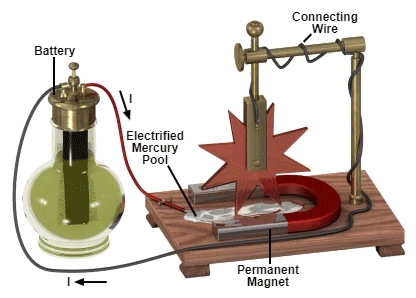What came to be known as Barlow’s wheel combined the powers of electricity and magnetism to produce continuous motion.
The metal wheel is connected in a circuit with a battery and a pool of mercury, The wheel can be raised out of the mercury to break the circuit, or lowered into the mercury to complete the circuit.
When the circuit is complete, a horseshoe magnet positioned around the wheel provides a magnetic field that interacts with the magnetic field created by the electric current, making the wheel move.
Barlow’s wheel was one of the first machines to harness the interplay between electric and magnetic forces that had been discovered just two years earlier by Hans Christian Ørsted.
It shows how an electrical current generating around it a circular magnetic field can interact with a second magnetic field to produce force and motion.
